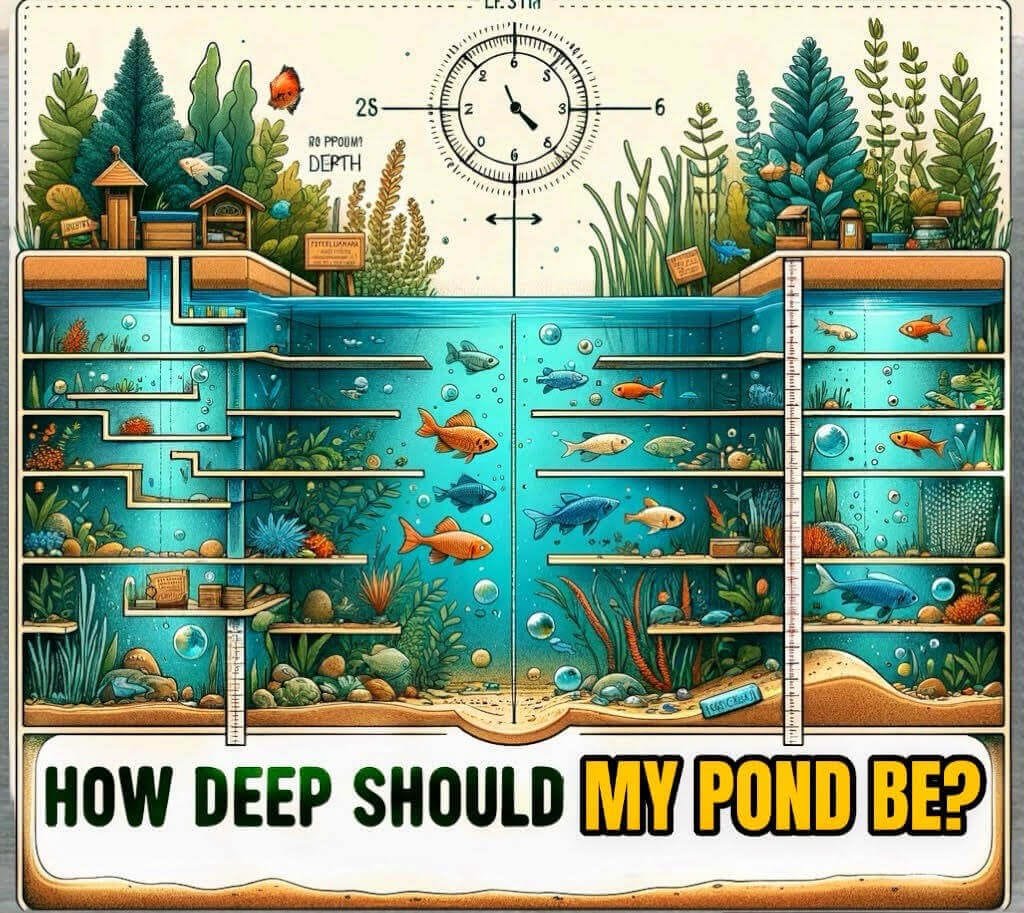Guide to Pond Depth For Optimal Health & Benefits
When diving into the world of backyard ponds, one of the most critical questions you’ll face is how deep your pond should be to provide a healthy and thriving environment for fish. The depth of your pond can significantly influence not only the health and happiness of your pond’s inhabitants but also the overall ecosystem balance and maintenance requirements. In this guide, we’ll explore the factors that determine the ideal pond depth for fish, considering various climates, types of fish, and other essential considerations.
Understanding Pond Depth Requirements
The depth of a pond is crucial for several reasons:
- Temperature Regulation: Deeper water can offer a more stable environment, protecting fish from extreme temperatures in both summer and winter.
- Oxygen Levels: Proper depth can help maintain adequate oxygen levels, crucial for fish survival.
- Predator Protection: A deeper pond can provide fish with places to hide from predators like birds and cats.
- Hibernation: In colder climates, a certain depth is necessary for fish to hibernate properly during winter.
Ideal Pond Depths by Fish Type
The ideal depth for your pond largely depends on the type of fish you plan to keep:
Goldfish: For smaller fish like goldfish, a minimum depth of 2 feet is recommended. This depth provides adequate protection from predators and can accommodate most goldfish varieties comfortably.
Koi: Koi carp require more space due to their size and longevity. A depth of at least 3 feet is advisable, with 4-5 feet being ideal, especially in regions with harsh winters. This depth allows koi to swim comfortably, avoid predators, and find warmer water during colder months.
Climate Considerations
Your local climate plays a significant role in determining the necessary pond depth:
- Colder Climates: In areas with harsh winters, deeper ponds are required to prevent the pond from freezing completely. A depth of 3-4 feet is typically recommended to ensure a safe zone for fish to hibernate.
- Warmer Climates: In milder climates, the depth might be slightly less critical for temperature regulation, but you should still consider depth for oxygenation and predator protection.
Other Considerations
- Pond Size and Shape: Larger ponds might require varying depths to create a more natural environment and support a diverse ecosystem.
- Aesthetic Preferences: The visual aspect of your pond, including visibility of fish, might also influence your decision on depth.
- Local Regulations: Always check for any local guidelines or regulations regarding pond construction, which may dictate minimum or maximum depths.
Conclusion
The depth of your pond is a vital factor in creating a sustainable and enjoyable environment for your fish. By considering the type of fish you wish to keep, local climate conditions, and other relevant factors, you can determine the optimal depth for your pond. Remember, a well-planned pond depth not only supports the health and safety of your fish but also contributes to the overall beauty and balance of your backyard oasis. Whether you’re a seasoned pond enthusiast or a newcomer eager to explore the joys of pond keeping, understanding the importance of proper depth will set you on the path to success.

